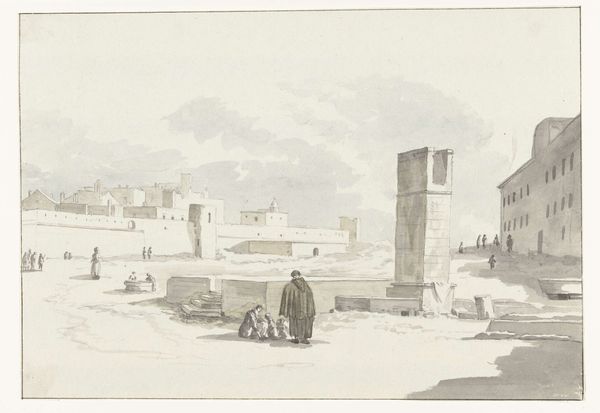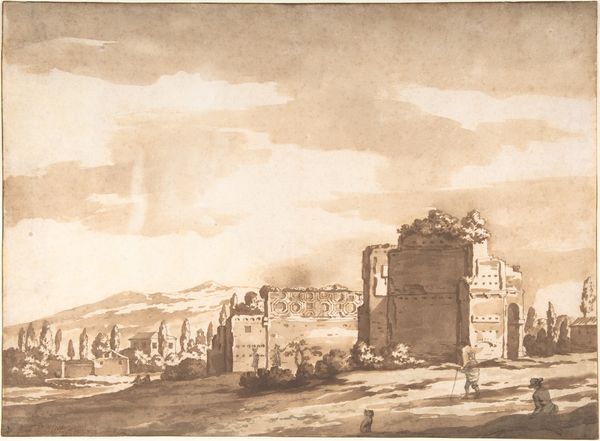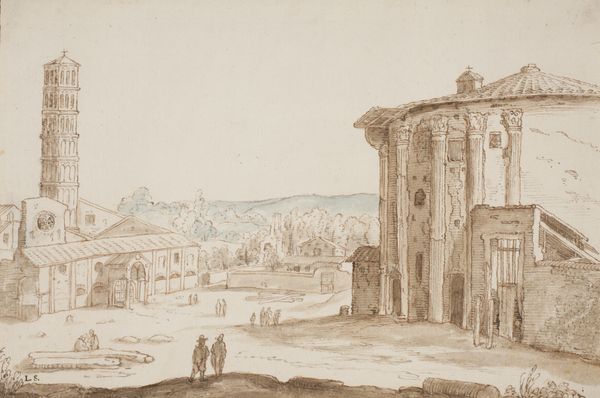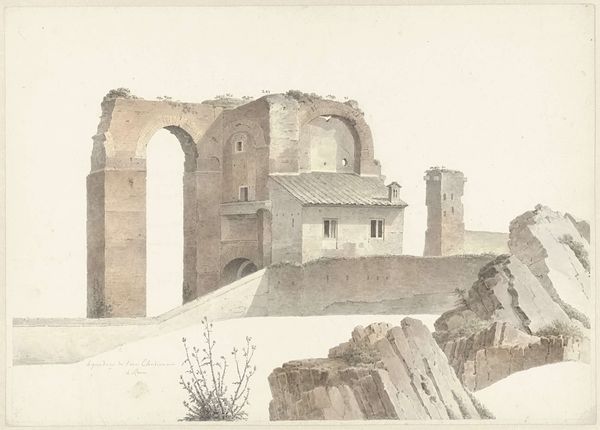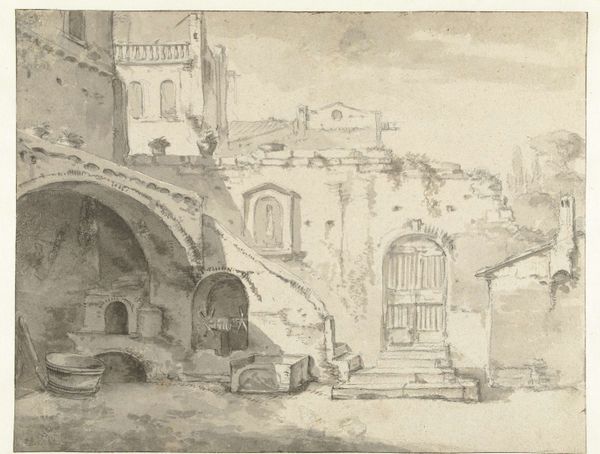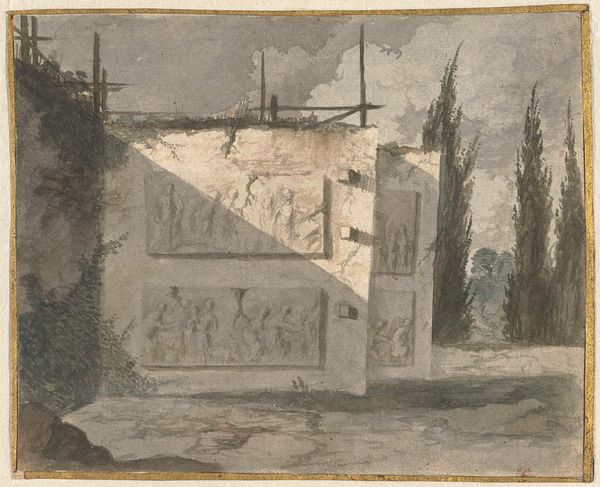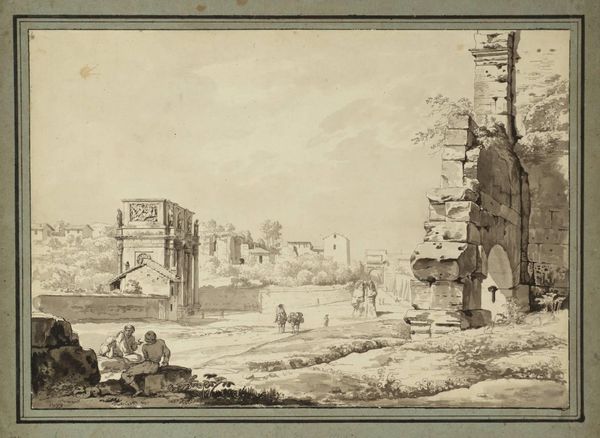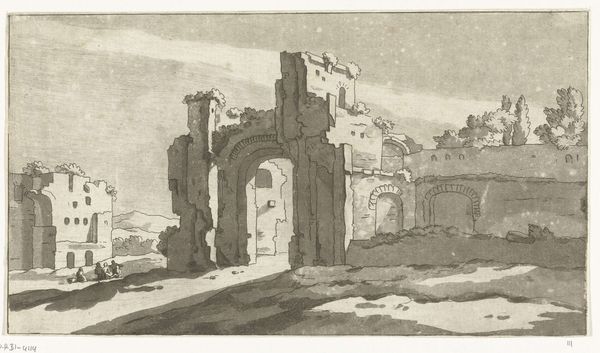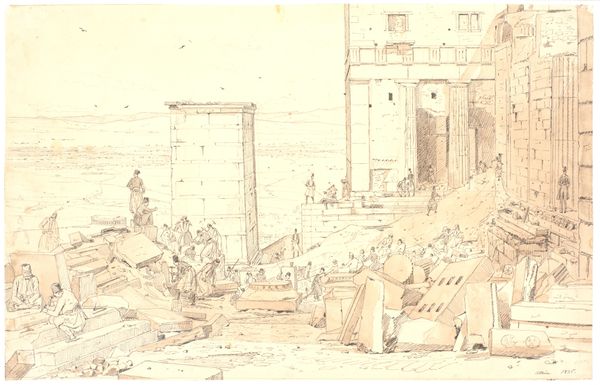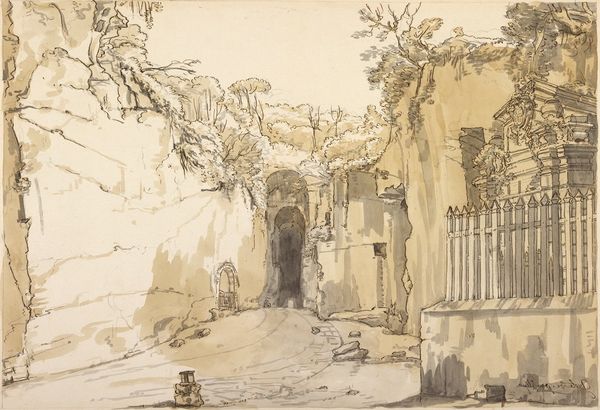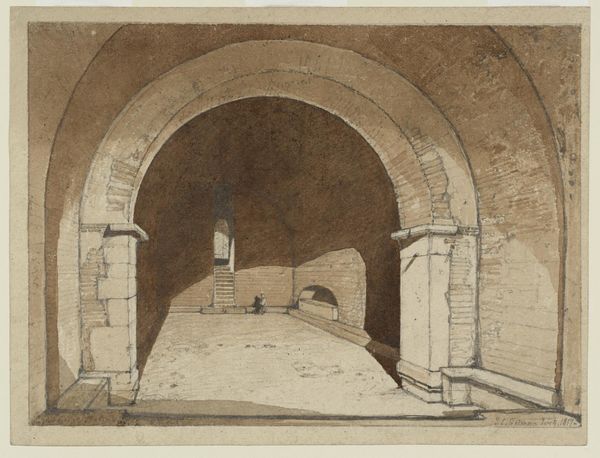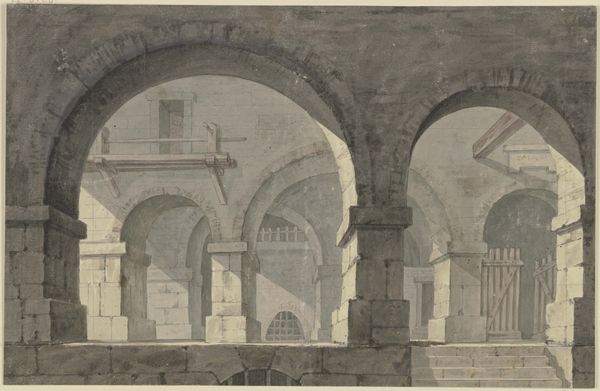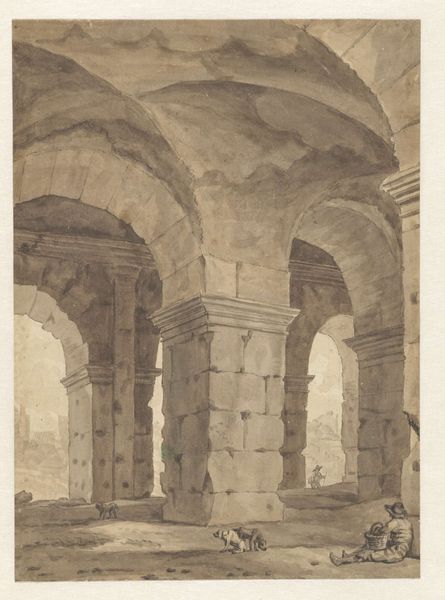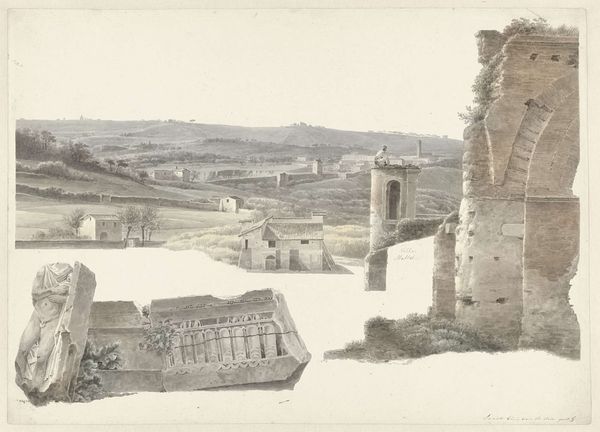
drawing, watercolor
#
drawing
#
landscape
#
charcoal drawing
#
watercolor
#
orientalism
#
watercolor
#
realism
Copyright: Rijks Museum: Open Domain
Willem de Famars Testas made this watercolour, titled "Begraafplaats", at an unknown date. The painting’s subject, a cemetery, raises questions about cultural encounters and artistic representation during the 19th century. Testas was known for his Orientalist works, portraying scenes from the Middle East and North Africa. In that time, European artists often depicted the “Orient” through a lens that emphasized the exotic, and sometimes, the backward nature of these regions compared to the West. This artistic trend was deeply connected to European colonialism and the desire to legitimize Western domination. How does Testas' painting fit into this context? Does it perpetuate stereotypes, or does it offer a more nuanced view? We can start by considering the visual codes within the image, looking for architectural styles, and symbolic elements. These might allow us to identify the specific cultural and historical setting. Art historians employ travel accounts, photographs, and other documentary evidence to reconstruct the world in which art was produced and consumed. This approach underlines the vital role of historical context in understanding art.
Comments
No comments
Be the first to comment and join the conversation on the ultimate creative platform.
